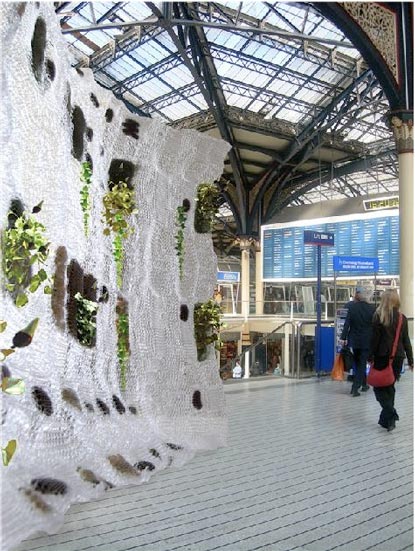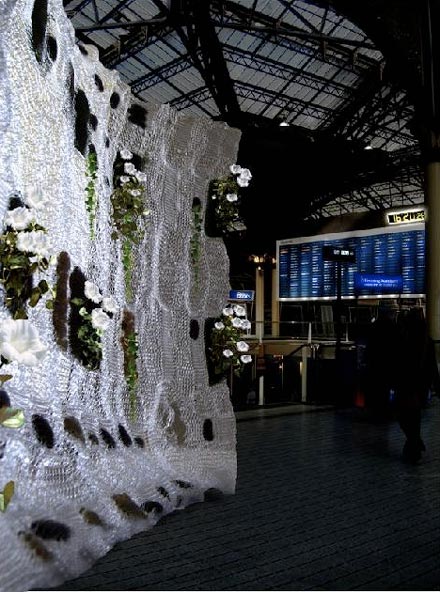moon flower wall

moon flower wall during the day in Liverpool street station

moon flower wall at night in Liverpool street station
Work done in collaboration with Joanna Lewis, Textile designer MA RCA.
By designing the seed and plant placement and embedding these within the knitting, the natural growth of plants will take over the structure to create a living and evolving pattern across walls, over columns and around building skins.
In this viualisation we have taken London’s Liverpool Street station as a site in which this structure would be placed where the 'Moonflowers' could flower at night. The idea of this structure and the type of plants used is to create a more ambient and appealing environment in the evenings when station environments often become threatening.
The species used here is the ‘Ipomoea alba’, otherwise known as ‘Moonflower’s', so called because they bloom in the evening from 8pm. They have large 4 to 6 inch fragrant, white or pink flowers on twining vines. The flowers open quickly in the evening opening in one minute, (with the main section opening within 30 seconds) and last through the night, remaining open until touched by the morning Sun. Moonflowers grow to a height of about 15 feet. Moonflowers should be planted when the Moon is new or increasing in light.
Other plants that could be used are touch sensitive plant like a ‘Mimosa’; they have the capability to display thigmonasty (touch-induced movement). In the sensitive plant, the leaves respond to being touched, shaken, heated or rapidly cooled. The speed of the response depends on the magnitude of the stimulus. Hitting the leaf hard with the flick of a finger will cause the leaf to close in the blink of an eye whereas a gentle touch, for example a commuter brushing past it in Liverpool Street station or modest heat source applied at the tip of a leaf will result in a slower response and the propagation of the stimulus along the leaf can be observed.
